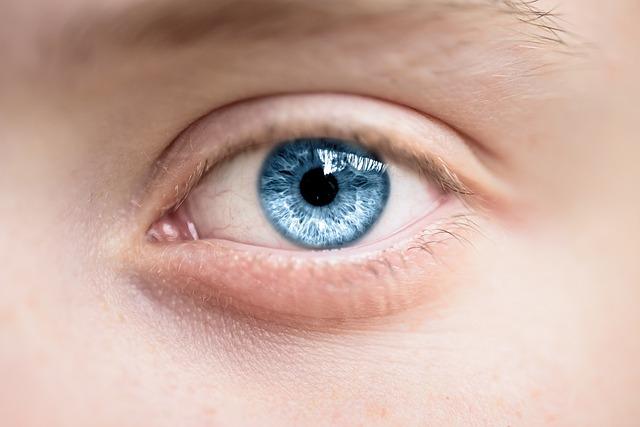Importance of Vision:
Imagine this: You're standing on a mountain peak, taking in the breathtaking panorama of rolling hills and distant lakes. But as you try to focus on the scenery, a wave of discomfort washes over your eyes. The vibrant colors seem to fade, replaced by a dull ache and a persistent dryness.
This isn't just a picturesque scenario; it's a reality for millions of people who struggle with dry eye. This common condition can significantly impact our daily lives, making it difficult to focus on work, enjoy entertainment, and simply appreciate the beauty around us.
But what if there were natural ways to alleviate these symptoms and reclaim the comfort we deserve? In this blog post, we'll delve into the world of dry eye, exploring its causes and uncovering natural solutions to help you beat the "dry eye blues" and rediscover the world with clear, comfortable vision.
Understanding Dry Eye:
Dry eye, also known as Dry Eye Disease (DED), is a condition characterized by the inability of the eyes to produce enough tears or maintain their quality. This leads to an imbalance in the tear film, a complex layer that protects the eye's surface, lubricates it for smooth blinking, and fights off infection.
Symptoms of dry eye can be quite bothersome, affecting both the comfort and clarity of your vision. These include:
- Gritty or scratchy sensation in the eyes, as if something is stuck there.
- Burning, stinging, or itching in the eyes.
- Redness of the eyes.
- Excessive tearing (ironically, sometimes the body overcompensates for dryness by producing excessive tears).
- Blurry vision, especially noticeable during prolonged tasks like reading or using screens.
- Light sensitivity and discomfort in bright environments.
Dry eye can be caused by various factors, including:
- Environmental factors: Dry air, air conditioning, wind, and smoke can all contribute to dry eye.
- Age: As we age, tear production naturally decreases, making dry eye more common in older adults.
- Medical conditions: Certain medical conditions, such as Sjogren's syndrome, rheumatoid arthritis, and allergies, can affect tear production.
- Medications: Some medications, such as antihistamines, antidepressants, and decongestants, can have dry eye as a side effect.
- Lifestyle factors: Spending too much time on screens, wearing contact lenses, and smoking can increase the risk of dry eye.
It's important to note that this information is not intended to diagnose or treat any medical condition. While natural remedies can be helpful, consulting an eye doctor for proper diagnosis and personalized treatment is crucial. They can assess the underlying cause of your dry eye and recommend the most effective course of action.
Natural Solutions for Eye Comfort:
While there's no single cure-all for dry eye, incorporating natural solutions into your daily routine can significantly improve your eye comfort and alleviate symptoms. One key area to focus on is your diet.
Essential fatty acids, particularly Omega-3s, play a vital role in tear production. These healthy fats act like the building blocks for the oily layer of your tear film, helping to retain moisture and prevent evaporation. Studies have shown that increasing Omega-3 intake can lead to noticeable improvements in dry eye symptoms.
So, how can you boost your Omega-3 intake? Here are some delicious and eye-friendly options:
- Fatty fish: Salmon, tuna, sardines, mackerel, and herring are all excellent sources of Omega-3s. Aim to incorporate these into your diet at least twice a week.
- Flaxseeds: These tiny seeds are packed with Omega-3s in the form of alpha-linolenic acid (ALA). Grind them into flour for baking or sprinkle them on salads, cereals, or yogurt.
- Walnuts: These crunchy nuts are not only a good source of Omega-3s but also contain vitamin E, another nutrient beneficial for eye health. Enjoy a handful as a healthy snack or add them to trail mixes and salads.
While Omega-3s are a star player, other nutrients also contribute to eye health and may offer additional benefits. Here's a quick mention of some:
- Vitamin A: Plays a crucial role in maintaining healthy tear production and corneal (outer eye surface) health. Found in carrots, sweet potatoes, spinach, and kale.
- Vitamin E: Acts as an antioxidant, protecting against cell damage in the eyes. Sources include almonds, sunflower seeds, and avocados.
- Lutein and Zeaxanthin: These antioxidants are found in the macula, a part of the eye responsible for central vision. They may help filter harmful blue light and protect against age-related macular degeneration. Found in leafy green vegetables, yellow and orange fruits like oranges and mangoes, and egg yolks.
Remember, this is not an exhaustive list, and it's always recommended to consult a healthcare professional before making significant dietary changes. In the next section, we'll explore other natural strategies you can incorporate alongside dietary adjustments to embrace a more comfortable and clear-eyed future.
Hydration:
Beyond diet, staying well-hydrated is critical for overall health, and your eyes are no exception. Just like the rest of your body, your eyes are composed mostly of water. Proper hydration ensures that your tear film remains fluid and functions optimally to lubricate your eyes, prevent dryness, and wash away irritants.
Think of your body like a well-oiled machine – when you're dehydrated, everything starts to run a little sluggishly. This includes tear production, which can lead to dry, scratchy eyes and blurry vision.
So, how much water should you aim for? While individual needs may vary, a good rule of thumb is to drink eight 8-ounce glasses of water per day. You can also listen to your body's thirst cues and adjust your intake accordingly.
Here are some additional tips to stay hydrated:
- Carry a reusable water bottle with you throughout the day.
- Set reminders on your phone or use a hydration app to track your water intake.
- Choose water over sugary drinks whenever possible.
- Enjoy hydrating fruits and vegetables like watermelon, cucumber, and celery.
By prioritizing hydration, you're not only quenching your thirst but also nurturing your eyes and promoting overall well-being. Stay tuned for the next section, where we'll explore other natural strategies to help you beat the "dry eye blues" and reclaim eye comfort.
Eye Care Practices:
In addition to dietary adjustments and staying hydrated, there are several simple everyday practices you can incorporate into your routine to promote eye comfort and alleviate dry eye symptoms.
Blinking: We often take this involuntary action for granted, but blinking plays a crucial role in healthy tear production and distribution. Blinking spreads tears across the surface of your eyes, keeping them lubricated and washing away dust and debris.
However, staring at screens for extended periods can lead to decreased blinking frequency, contributing to dry eye. Make a conscious effort to blink regularly, especially while using digital devices.
Screen Breaks: Speaking of screens, taking regular breaks from them is essential for eye health. Every 20 minutes, look away from the screen for 20 seconds and focus on an object at least 20 feet away. This allows your eyes to refocus and relax, reducing strain and potentially alleviating dry eye symptoms.
Warm Compresses: Applying warm compresses to your closed eyelids can help melt and release blocked oils in the meibomian glands, which are responsible for producing the oily layer of your tear film. This can improve tear quality and alleviate dryness.
Artificial Tears: Artificial tears can provide temporary relief from dry eye symptoms by lubricating the eyes. However, it's important to consult an eye doctor before using any artificial tear products, as they come in various formulations and may not be suitable for everyone. They can also recommend specific products tailored to your individual needs.
Remember, these are just a few general tips, and consulting an eye doctor is crucial for personalized advice and treatment recommendations based on the underlying cause of your dry eye. Stay tuned for the next section, where we'll explore additional lifestyle modifications to embrace a more comfortable and clear-eyed future.
Lifestyle Modifications:
Beyond dietary and eye care practices, taking a holistic approach to your overall well-being can significantly contribute to managing dry eye. Here are a couple of lifestyle modifications to consider:
Reduce Environmental Irritants: Dry air, air conditioning, smoke, and wind can all exacerbate dry eye symptoms. When possible, minimize exposure to these irritants. Use a humidifier to add moisture to the air in your home, avoid smoking and smoky environments, and consider wearing protective eyewear outdoors, especially in windy conditions.
Manage Stress: Studies suggest a link between stress and dry eye. When stressed, the body produces hormones that can affect tear production. Implementing relaxation techniques, such as yoga, meditation, or deep breathing exercises, can help manage stress levels and potentially alleviate dry eye symptoms.
Remember, these are just a few ways to create a supportive environment for your eyes. By incorporating these natural solutions into your daily routine, you can take proactive steps towards managing dry eye, increasing comfort, and rediscovering the joy of clear vision.
In the concluding section, we'll summarize the key takeaways and encourage you to embark on your journey towards embracing a healthier and more vibrant visual experience.
Conclusion:
Our vision is a precious gift, allowing us to connect with the world around us, experience the beauty of life, and navigate our daily lives with ease. However, dry eye can cast a shadow on this gift, causing discomfort and impacting our ability to fully appreciate the world in all its clarity.
While there's no single solution for dry eye, incorporating natural remedies into your routine can significantly improve your eye comfort and alleviate symptoms. From dietary adjustments like increasing Omega-3 intake and staying hydrated to simple practices like blinking regularly and taking breaks from screens, these natural solutions offer a holistic approach to promoting eye health.
Remember, consulting an eye doctor is crucial for proper diagnosis and personalized treatment recommendations. However, alongside professional medical advice, implementing these natural solutions can empower you to take charge of your eye health and embrace a future filled with clear, comfortable vision.
Have you experienced dry eye? Have you tried any natural remedies that have been helpful? Share your experiences and tips in the comments below! Let's create a supportive community where we can learn from each other and discover effective ways to beat the dry eye blues and reclaim clear vision together.




